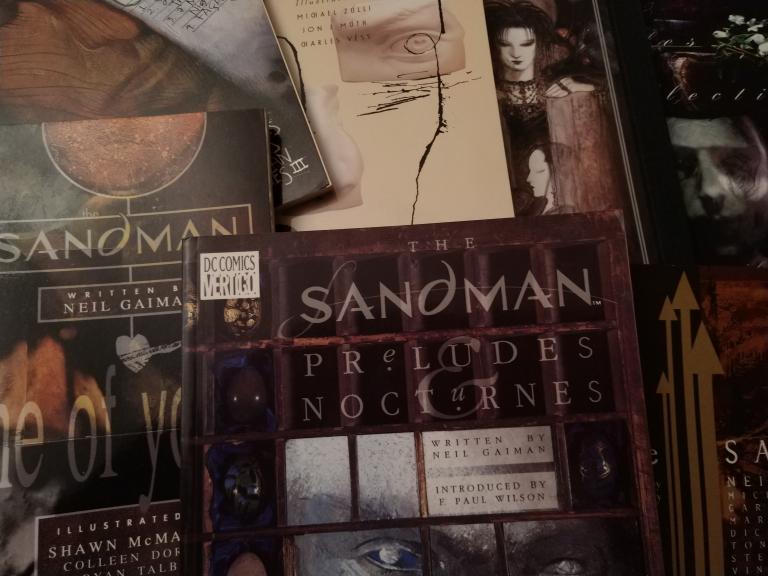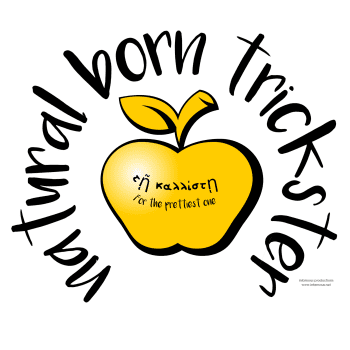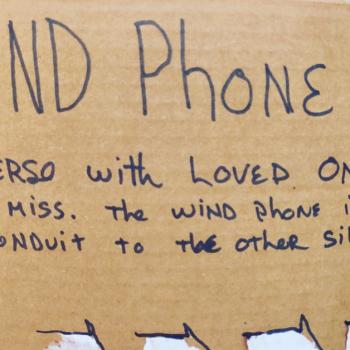Thirty years ago today, Neil Gaiman’s Sandman first hit the shelves in comic book stores, giving the world a whole new take on gods and beings beyond gods.
Thor and Loki and Odin walked through its pages, as did Lucifer and the angels Remiel and Duma and the demons Azazel and Choronzon, and Anubis and Bast, and the Shinto god Susanoo-no-Mikoto, and Orpheus and Hades and Persephone. And it gives us one of the few stories of Terminus, “he who walks the boundaries” — “the only god to whom Jupiter must bow” because “boundaries are the most important of things.”
But beyond all those old deities, Gaiman gives us a brand new pantheon, the Endless. And yes, within the mythos of the story the Endless are explicitly not gods, but let’s not get hung up on semantics.
Let’s agree that Destiny, Death, Destruction, Dream, Desire, Despair, and Delirium (who was once Delight) are close enough to deities for our purposes: beings of greatly super-human power and responsibility yet mostly human emotional and mental attributes, who are known to us through epic stories
How do deities — not in Gaiman’s literary universe, but in ours — come into being and come to be worshiped by a culture? There are only three possibilities:
1. Deities are created by a culture, as works of art and literature are. Zeus was invented by the classical Greeks just as certain forms of drama and sculpture and poetry were. This is probably the dominant scholastic view, at least of other culture’s deities: a modern scholar of ancient Greece might know that the god he or she worships on weekends is and always has been real (see option 3), yet be quite confident that Zeus was an invention of man.
2. Deities are not invented like art and literature, but do come into being as a culture forms, though a process of thought and attention. We might see this as a supernatural process — a trope common in fantasy fiction, where deities are super-beings made of some supernatual substance and their power rises and falls with the number of their worshipers; or we might see it from a naturalist, ontological anti-realist position where we have to ask hard questions about just what a “deity” is and what it means to “exist”..
3. Deities exist independent of humans, and are just hanging around in heaven or the Platonic realm or wherever until human cultures discover them. Most people probably hold that this view is true of their deities, while your deities are just literary creations under case 1.
Deities are either invented, created, or discovered. And that is a process of story-telling. We invent them in our stories, or create them via our stories, or we spread the discovery of them through our stories.
Stories make gods.
And for each of the deities known to us, from Dionysus to Fudo No Myo, from Jehovah to Eris, there must have been a time when this was just getting started.
When there was just one person telling the stories.
If it stays just one person, or just a handful, then all you have is a fictional character, however powerful. But when we all start telling the stories? When we all start making the stories, by invoking the characters into our lives?
Where will Dream and Death and Delirium be in fifty or a hundred years or five hundred years? We might see the Gaimanist pantheon take its place beside others, with devotional followers and ritual invocations and all the trappings.
Look well, my friends. Few are privileged to watch the birth of a pantheon of gods.
You can keep up with “The Zen Pagan” by subscribing via RSS or e-mail.
Have I mentioned my book lately? Why Buddha Touched the Earth makes a great Yule gift for the Zen Pagan on your list.


















